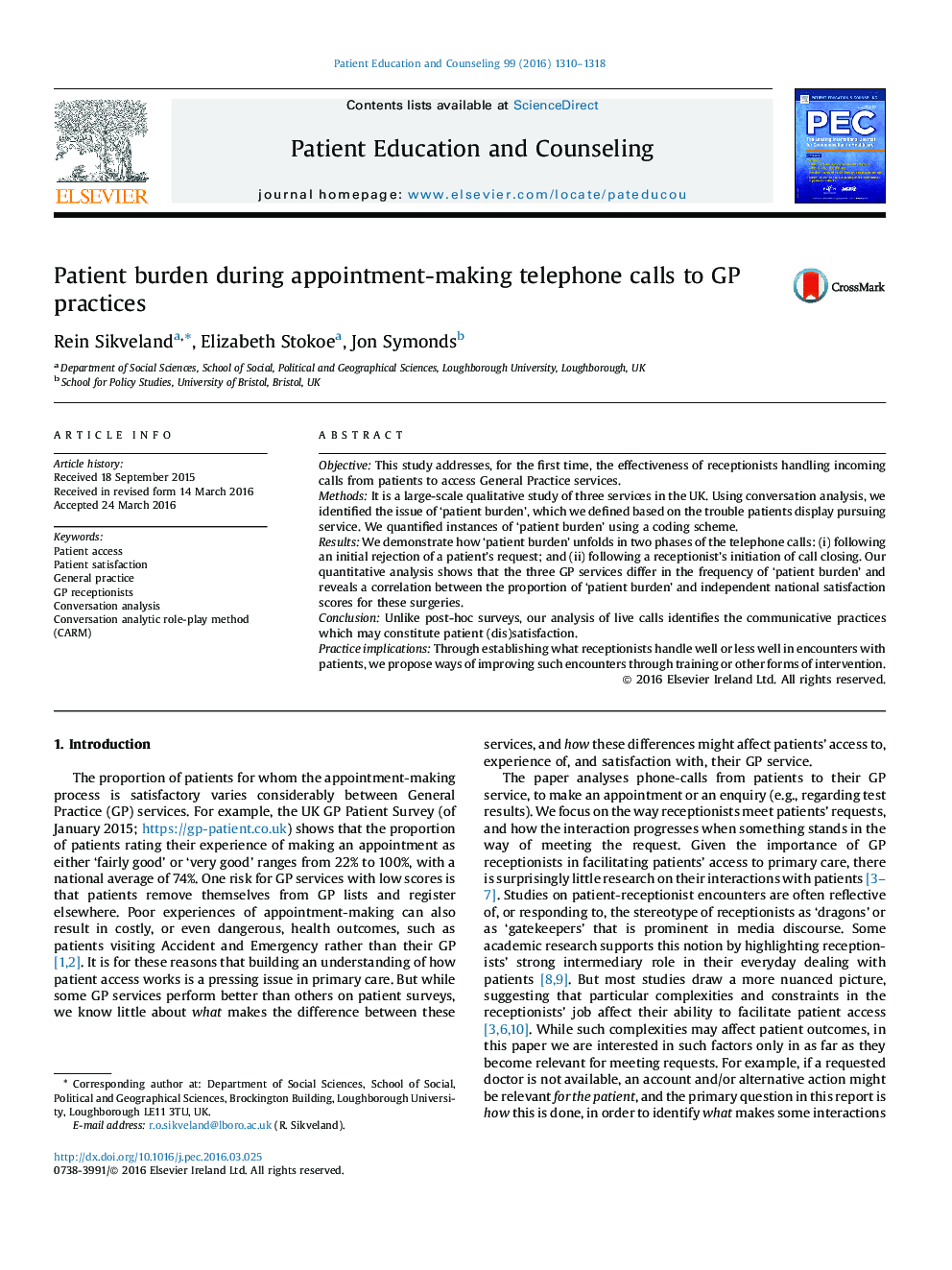| Article ID | Journal | Published Year | Pages | File Type |
|---|---|---|---|---|
| 6153955 | Patient Education and Counseling | 2016 | 9 Pages |
â¢A large-scale qualitative study of patients calling their GP service.â¢Through live analysis of calls we identify (in)effective communicative practices.â¢Cues to (in)effective communication correlate with patient satisfaction scores.â¢We propose ways of improving receptionist-patient encounters through training.
ObjectiveThis study addresses, for the first time, the effectiveness of receptionists handling incoming calls from patients to access General Practice services.MethodsIt is a large-scale qualitative study of three services in the UK. Using conversation analysis, we identified the issue of 'patient burden', which we defined based on the trouble patients display pursuing service. We quantified instances of 'patient burden' using a coding scheme.ResultsWe demonstrate how 'patient burden' unfolds in two phases of the telephone calls: (i) following an initial rejection of a patient's request; and (ii) following a receptionist's initiation of call closing. Our quantitative analysis shows that the three GP services differ in the frequency of 'patient burden' and reveals a correlation between the proportion of 'patient burden' and independent national satisfaction scores for these surgeries.ConclusionUnlike post-hoc surveys, our analysis of live calls identifies the communicative practices which may constitute patient (dis)satisfaction.Practice implicationsThrough establishing what receptionists handle well or less well in encounters with patients, we propose ways of improving such encounters through training or other forms of intervention.
